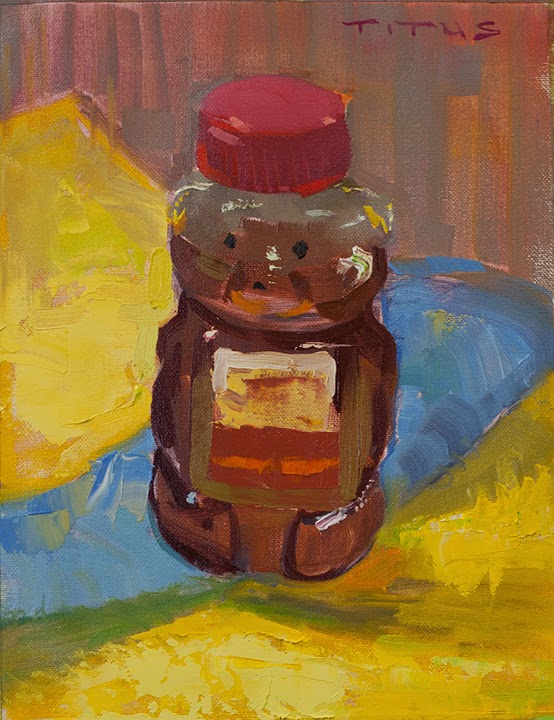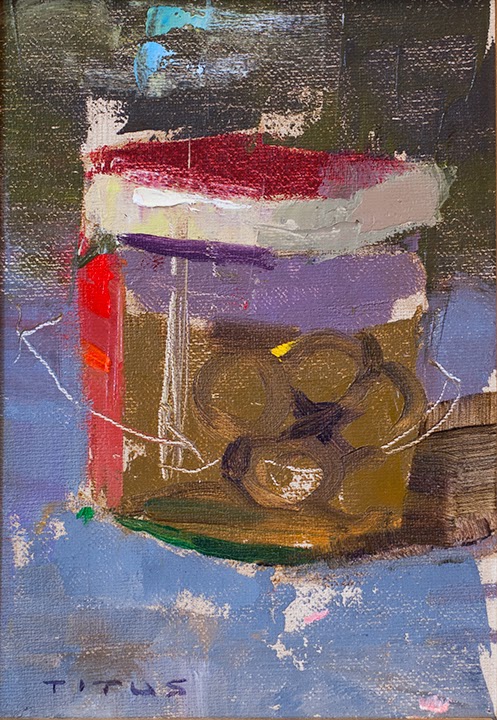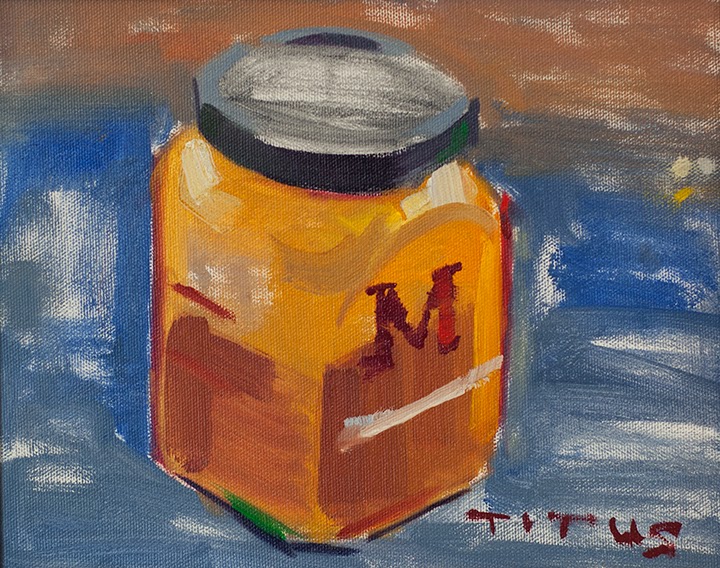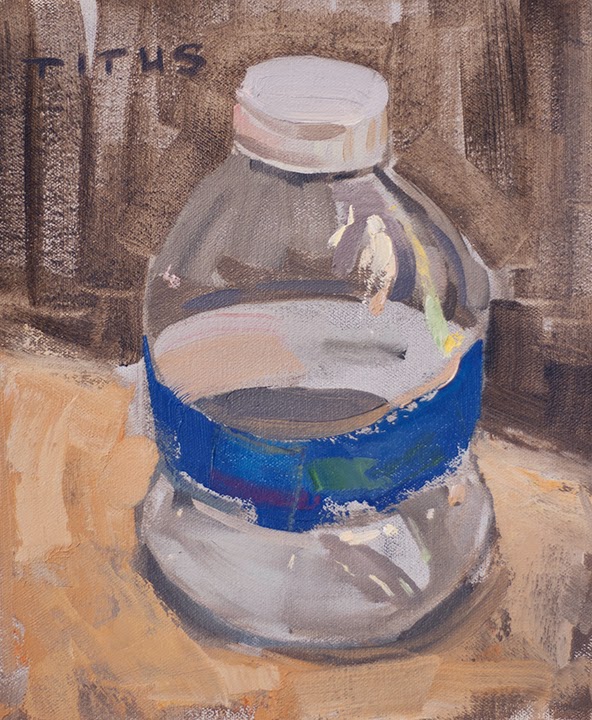 |
| Honey Bear, 10x8 inches |
These exercises are a lot of fun. They're not large or complicated so I feel like I can just paint. I can paint like a child and not worry about creating my next great contribution that will shake the core of the Art World. I paint like a child and without my critic. I completely let go and use what I have learned about painting only if it occurs to me.
 |
| Jar of Olives, 7x5 inches |
I may now concentrate on one fundamental of painting at a time and not get overwhelmed. Perhaps in this exercise my focus was about brush stroke and becoming intimate with all the different ways of applying the paint. Do I use a brush, a palette knife, the handle of a brush, a shoe or do I scrape into the canvas with a palette knife? I want to become intimate with and feel each stroke as if time has slowed down. I feel and become more sensitive to the amount of pressure applied to each stroke as well as how much paint is being loaded into the bristles.
 |
| Marmalade, 8x10 inches |
In this exercise my focus was on using brown and black to tint my colors. I found that if I used black (or varying shades of it) to tint orange, the oranges turned more of a green. If I used brown (or varying shades of it) to tint orange, the oranges stayed warmer. And, if I used brown and black together the orange would become darker or lighter without leaning toward green or brown. The same was applied to all the other colors. Because of this, I used more gray in the light side and more browns in the shade side to imply the warm and cool of the natural light conditions (warmer shadows and cooler lights).
 |
| Water Bottle, 10x8 inches |
This exercise I used just black and it's varying shades of grays to tint my colors. Super simple. Super easy. Even a kid can do it.




